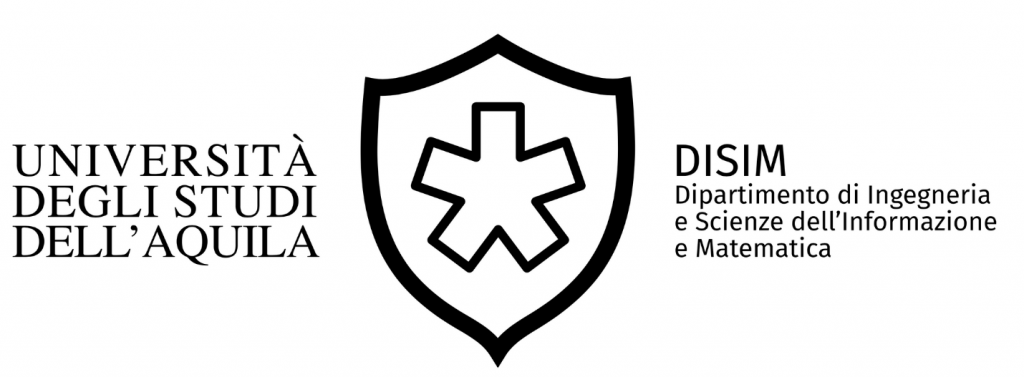Curriculum 1
Systems Engineering, telecommunications and HW/SW platforms
Modeling and control of cyber-physical systems Scientific Supervisor: Prof. Pierdomenico Pepe
Activities in this research area aim at providing mathematical background and tools for the modelling, analysis and control of Cyber-Physical Systems (CPS). CPS refer to the integration of physical systems and processes with networked computing. The growing interest in CPS is sustained by the development of important enabling technologies such as embedded systems and wired or wireless communication networks. Embedded systems are computing systems designed to perform dedicated functions often with real-time constraints, and span all aspects of everyday life, from automotive to avionics systems, from white goods to consumer electronics. Monitoring the environment, energy-efficient buildings and industrial plants are today feasible with the use of a possibly large number of sensors distributed over a wide region. Control is one of the most advanced applications of CPS. Smart factories, transportation systems and energy grids are typical examples of CPS: in these systems, sensors, actuators and computing elements are connected by means of a shared (wireless) communication network. Together with the opportunities offered by the wealth of sensing/communication devices and increasing computing power, come tough challenges: control theory is traditionally based on mathematical paradigms that do not consider the non-idealities introduced by hardware/software devices and communication networks. These effects pose a number of difficult theoretical and practical problems: the design of distributed control systems must indeed jointly address the dynamics of physical systems, real-time computing and communication protocols and infrastructures.
Telecommunication systems and networking Scientific Supervisor: Prof. Fortunato Santucci
Besides the huge effort to enhance the role of communication networks as underlying layers enabling sound technical representation and analysis of any system in modern application domains (with the emerging paradigms of CPS and Systems of Systems as relevant examples), this research area includes major topics dealing with fundamental advances in technologies, algorithms and architectures that relate to both fixed and wireless network domains and their integration. A list of major topics is provided in the following:
-
- High throughput and low latency communications across heterogeneous fixed-wireless access infrastructures;
- Network management for advanced services in broadband infrastructures for the future Internet;
- Cross-layer protocol design for wireless sensor networks (WSN) and mobile ad-hoc networks (MANETS);
- Cooperative wireless communications, that includes relay networks and network coding for energy-efficient networking;
- Zero power short-range wireless identification systems (RFID);
- Interference modelling, radio resource management and optimization in heterogeneous and cognitive wireless networks, that include LTE and beyond;
- Methodologies and toolchain for design, simulation and fast prototyping of protocol stacks in the wireless domain, that relate to the Software Defined Radio (SDR) and Software Defined Network (SDN) paradigms;
- Distributed algorithms for localization techniques that rely on fusion of heterogeneous sensing elements;
- Advanced middleware for supporting security in networked embedded systems.
Applications context spans from the smart power grid to smart buildings, environmental monitoring, monitoring of civil structures, industrial control and intelligent transportation systems. Besides theoretical advances, all activities offer to opportunity to interact with partner companies. Furthermore, experimental facilities are available for testing in the real world.
Industrial Electronics and ICT for industry and energy transition, Embedded Systems, Micro and
Nano Electronic Design Scientific Supervisor: Prof. Carlo Cecati
Theme a)
ICT is a key-enabling technology for successfully addressing the massive demand for energy-saving devices, developing and improving renewable energy utilization, and facing full-electric transportation. Power converters, i.e. those devices providing energy/power conversion, control and, or stabilization, employ or implement modern digital signal processors (FPGA, uC, DSP), new power devices (produced with Si, SiC, and GaN technology), sophisticated control techniques and latest developments in telecommunications and computer science. Doctorate studies in this area will deal, theoretically and experimentally, with innovative power converters topologies (e.g. multilevel converters, modular converters, resonant converters, etc.), new control and synchronization techniques for full integration among distributed generators, non-linear control of electrical drives, fault diagnosis and tolerance, and related topics. Typical applications falling in this area are smart grids and associated devices, interfaces among renewable energy sources and the grid, electric vehicles, trains and ships, high-performance AC drives, servo drives, etc. Ph.D. students will carry out studies on control algorithms, modulation techniques as well as hardware development, aiming at developing next-generation power converters useful for sustainable development.
Theme b)
The development of innovative and increasingly complex ICT systems must be accompanied also by a more effective and efficient ability to specify, design, simulate, implement and validate micro and nanoelectronics integrated systems. Indeed, it is needed to be able to manage the increase of functional complexity on-chip with the performance improvement and the reduction of power dissipated on-chip and in the overall system. These objectives are often in marked contrast between them. They may be pursued only through complementary and cooperating innovative strategies. Some of these strategies aim to keep as much as possible a unified and technology-independent (i.e. mainly HW vs SW) view of the system under development. Other complementary strategies introduce the possibility to model, at a higher level of abstraction, devices, and systems while still keeping models linked to the technology layer. It is therefore of critical importance to develop innovative methodologies and tools for modeling and developing HW/SW on-chip systems (EDA tools, rapid prototyping, benchmarking, etc.).
